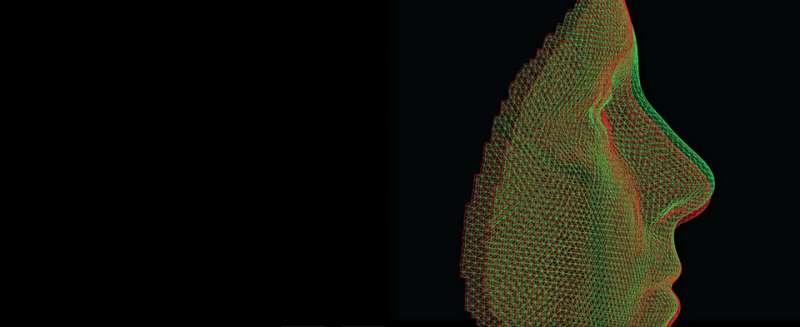About face: Special collection of papers celebrates research on how the human face forms

Our faces can reveal a lot about us, and now scientists are revealing a lot about faces. PLOS Genetics announces a special collection of papers to highlight recent advances in our understanding of how faces form, curated by Seth Weinberg of the University of Pittsburgh, and colleagues. The collection, entitled "Craniofacial genetics: where have we been and where are we going," publishes June 22 and features research on the development of the face and skull, facial birth defects and normal facial variation.
Research into the genetics that shape the face has made tremendous advances in recent years. Along with the mouse, the zebrafish has emerged as a powerful model for studying facial development. Many of the cellular processes that form the human face are highly similar in zebrafish, which have the added benefits of transparent embryos that can be examined under the microscope and multiple genetic tools for exploring genetic factors that control facial development.
Scientists have also identified numerous genes that contribute to facial malformations and syndromes through the use of rapid, high-throughput genomic technologies. These technologies have pinpointed mutations that cause both rare and common conditions such as cleft lip and palate disorders, in diverse populations. Scientists are beginning to see a growing list of genes in which genetic variants contribute to multiple diseases, and now must untangle the mechanisms that result in these individual malformations.
The study of facial variation has revealed that the multitude of human faces holds more variety than the faces of other animals, or other human body parts. By understanding the genetics underlying small differences in faces, scientists may one day be able to predict a person's face from the genome. This technology would enable us to construct faces from DNA collected at crime scenes, from the bones of our ancient ancestors or from an unborn child. All of these applications have considerable ethical and societal implications.
Major breakthroughs are occurring in the field of craniofacial genetics, and the curators of the special collection expect that this research will continue to accelerate. PLOS Genetics seeks to feature these breakthroughs through the publication of this collection and to advance the understanding of the genetics of facial formation so that these discoveries will ultimately benefit the public.
More information: Seth M. Weinberg et al, Craniofacial genetics: Where have we been and where are we going?, PLOS Genetics (2018). DOI: 10.1371/journal.pgen.1007438




















